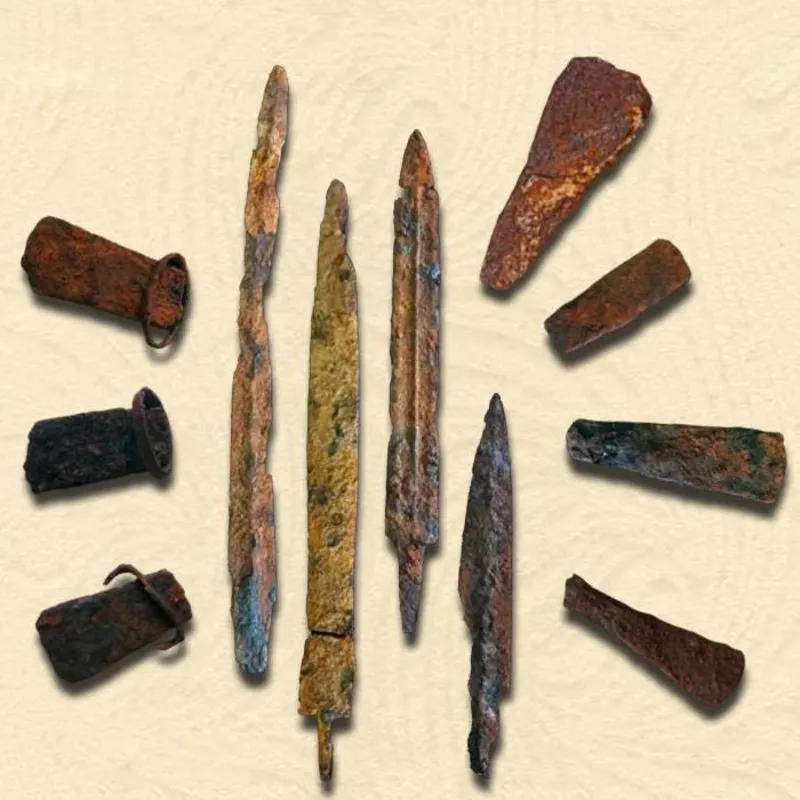Early iron came in two forms – meteoritic and smelted. Smelted iron, extracted from ore, marked the true beginning of iron technology with mass production. The earliest known iron artefacts – nine tubular beads – were made from meteoritic iron, which comes from fallen meteorites. Identifying iron-bearing rocks is the first challenge. Once located, these ores must be smelted in a furnace at extremely high temperatures to extract the metal. Without this process, raw iron remains locked within the rock. After extraction, skilled ironsmiths shape the metal into tools and implements, marking a crucial step in early ironworking. Most sites in Tamil Nadu where iron has been found are ancient habitation areas near present-day villages. Archaeologists K Rajan and R Sivanantham say that excavators have so far explored a fraction of over 3,000 identified Iron Age graves containing sarcophagi (stone coffins) and a wealth of iron artefacts. In the process, they uncovered hoe-spades, spears, knives, arrowheads, chisels, axes and swords made of iron. At burials excavated at one site, over 85 iron objects – knives, arrowhead, rings, chisels, axes and swords – were found inside and outside burial urns. More than 20 key samples were robustly dated in five labs worldwide, confirming their antiquity. Some finds are particularly striking. Historian Osmund Bopearachchi of the Paris-based French National Centre for Scientific Research highlights a key discovery – an iron sword from a burial site, made of ultra-high-carbon steel and dating to 13th–15th Century BC. This advanced steel, a direct evolution of Iron Age metallurgy, required sophisticated knowledge and precise high-temperature processes. “We know that the first signs of real steel production date back to the 13th Century BC in present-day Turkey. The radiometric dates seem to prove that the Tamil Nadu samples are earlier,” he said. Ms Roy adds that the early steel in Tamil Nadu indicates the people there “were iron makers, not just users – a technologically advanced community evolving over time”. Also, in a site called Kodumanal, excavators found a furnace, pointing to an advanced iron-making community. The furnace area stood out with its white discolouration, likely from extreme heat. Nearby, excavators found iron slag – some of it fused to the furnace wall – hinting at advanced metalworking techniques. Clearly the people at the site were not just using iron, but actively producing and processing it. To be sure, the Tamil Nadu excavations are not the first in India to uncover iron. At least 27 sites across eight states have revealed evidence of early iron use, some dating back 4,200 years. The latest Tamil Nadu digs pushes back the antiquity of Indian iron by another 400 years,” archaeologist Rajan, who has co-authored a paper on the subject, told me. “The Iron Age is a technological shift, not a single-origin event – it develops in multiple places independently,” says Ms Roy, noting earlier discoveries in eastern, western and northern India. “What’s clear now,” she adds, “is that indigenous iron technology developed early in the Indian subcontinent.” Experts say the excavations in Tamil Nadu are significant and could reshape our understanding of the Iron Age and iron smelting in the Indian subcontinent. Also, “what




